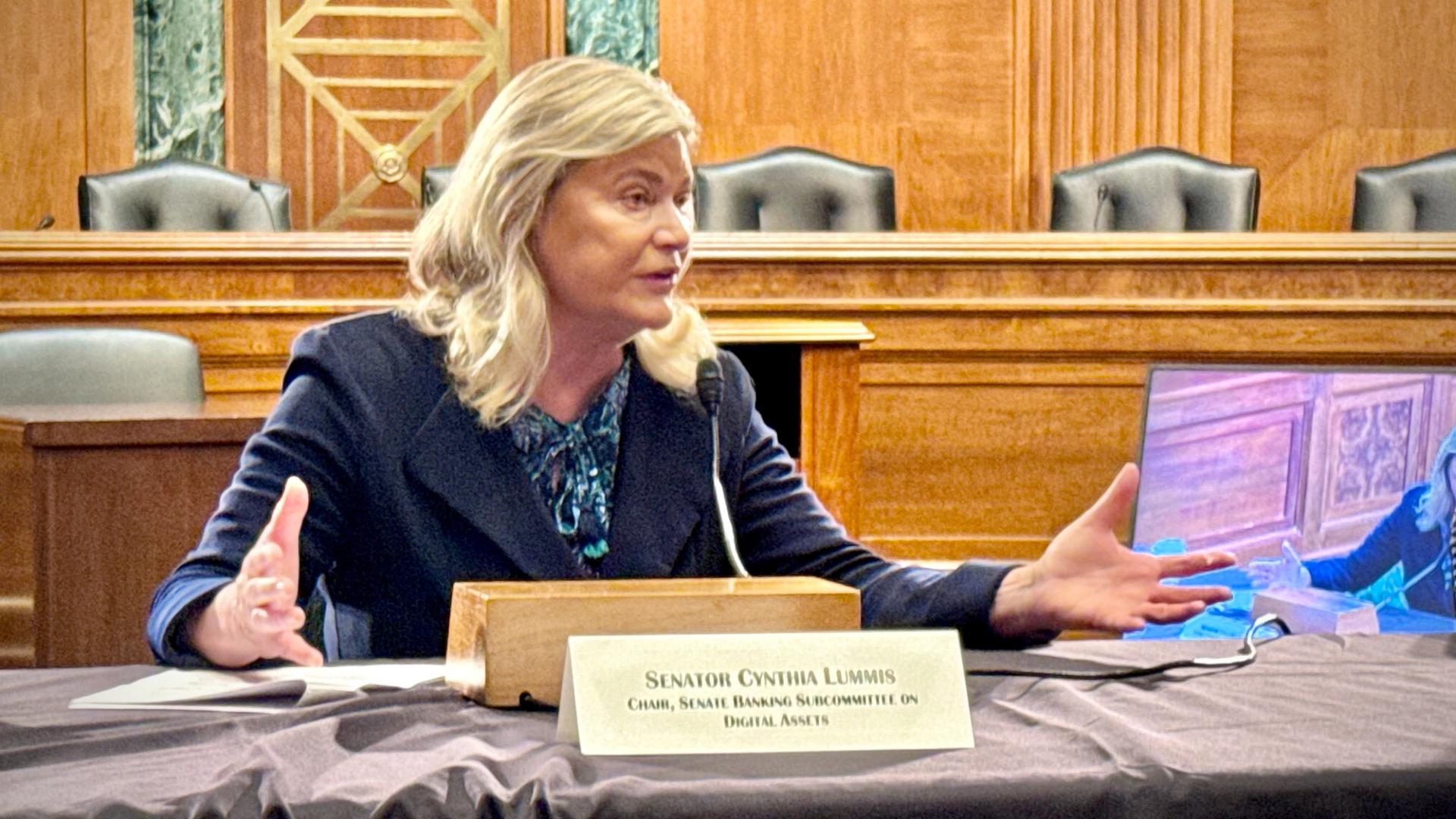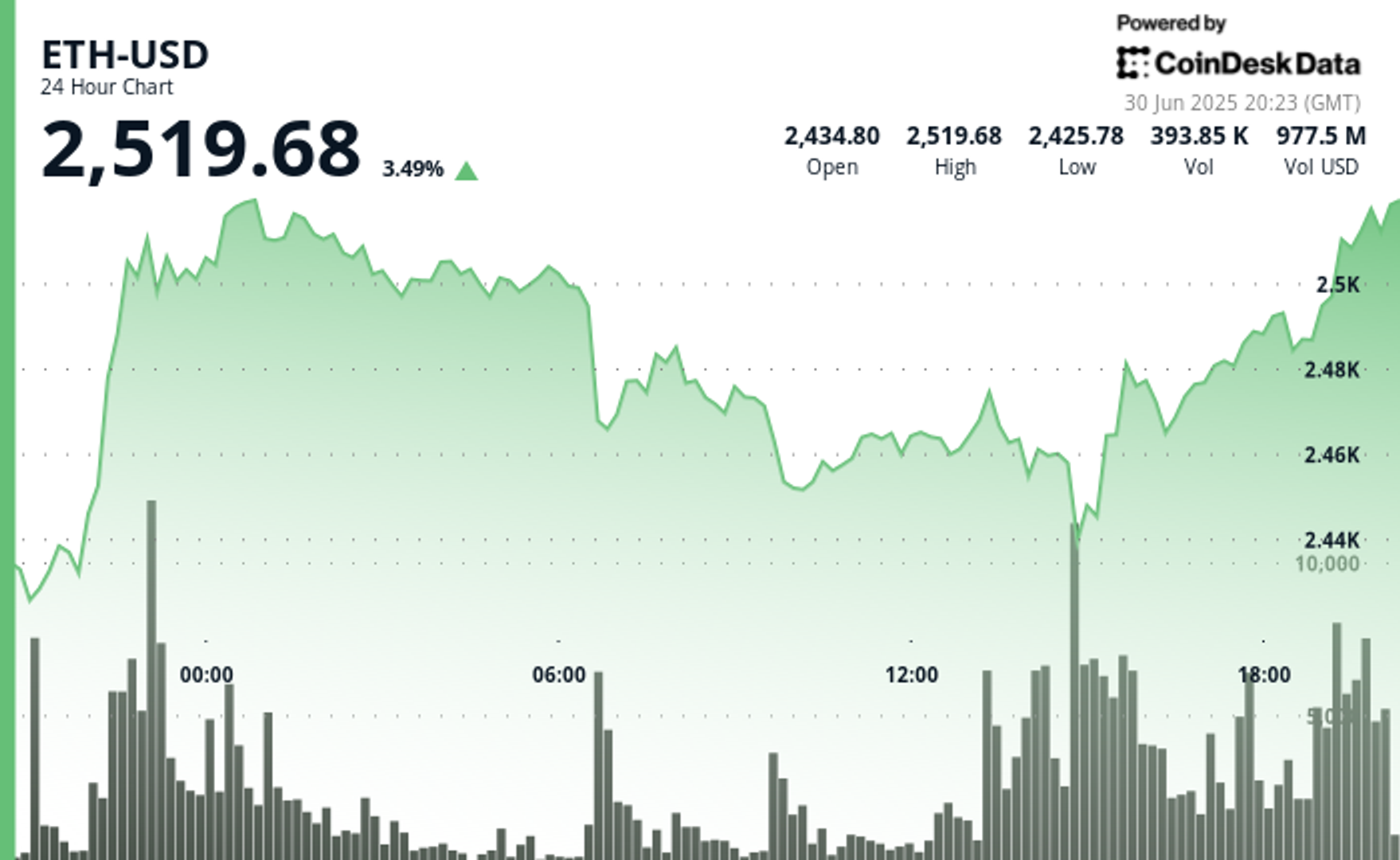Uncategorized
Coinbase Moves to Bring Oregon Securities Suit to Federal Jurisdiction

Coinbase (COIN) is petitioning a federal court to take over jurisdiction of Oregon’s lawsuit accusing it of selling unregistered securities, arguing the state is improperly interfering with federal efforts to clarify digital asset regulations.
In a filing late Monday evening, Coinbase argued that Oregon Attorney General Dan Rayfield’s lawsuit which it initiated in April over alleged trading of unregistered securities represents an overreach, and seeks to establish a patchwork regulatory landscape conflicting directly with ongoing bipartisan efforts at the federal level.
«This lawsuit is a regulatory land grab,» the filing reads. «Dissatisfied with the federal government’s recent enforcement decisions, Oregon’s new Attorney General has set out to dictate the future of crypto and the nationwide platforms on which they trade.»
Coinbase further argues that Oregon’s lawsuit ignores recent bipartisan federal efforts to clarify crypto regulations, improperly tries to create independent state-level oversight of digital asset platforms, and wrongly resurrects claims previously dismissed by federal regulators.
The Securities and Exchange Commission (SEC) dropped its enforcement action against Coinbase in February, weeks after the inauguration of President Donald Trump. The exchange made a $1 million donation to Trump’s inaugural committee.
«What you have here is Oregon, and only Oregon, trying to revive the SEC case, which was dismissed with prejudice,» said Ryan VanGrack, Coinbase Vice President of Legal in an interview.
«A lone Attorney General is trying to inhibit regulatory clarity and impede consumers’ freedom to choose when and how they invest in crypto,» VanGrack said.
Coinbase points out in the filing that the state’s Attorney General might not even have the authority to file the case.
«Oregon-based securities transactions are generally regulated by the Division of Financial Regulation, not the Attorney General,» Coinbase wrote. «The Attorney General nonetheless seeks to stretch his limited enforcement authority beyond the breaking point to install himself as the commissar of crypto for Oregon and beyond.»
In an interview, VanGrack explicitly rejected the idea that Oregon’s lawsuit is simply a partisan issue.
Rather than framing it as a straightforward «red state vs. blue state» conflict, he emphasized a more nuanced approach, highlighting how states of various political leanings have dropped or not pursued similar actions.
«Crypto has become more bipartisan, and we have other statewide litigation in which red states and blue states have dismissed their actions,» he said, highlighting Vermont, a traditionally Democratic state, as well as Kentucky, considered politically «red» federally but led by a Democratic governor, and Illinois, typically seen as a blue state, all dismissing crypto-related litigation.
«It’s less about red or blue; it’s that there are a few holdovers,» VanGrack said, emphasizing that crypto regulation and clarity have increasingly become bipartisan goals federally.
He suggested Oregon’s action is an outlier driven not necessarily by partisan politics, but by the specific motivations of its Attorney General.
«The motivations for this lawsuit are transparent,» VanGrack concluded. «It’s not about the law, and it’s not about a desire to help Oregonians. It’s about the politics. It’s an effort to grab headlines at Oregon’s expense.»
Coinbase has pledged to vigorously defend its position, stating clearly it has no intention of voluntarily exiting Oregon’s market.
«We are not pulling out of the state unless we are required to,» VanGrack affirmed. «We are going to fight, because what Oregon has done is wrong.»
Uncategorized
Asia Morning Briefing: Are Distributed Compute Tokens Undervalued vs. CoreWeave (CRWV)?

Tech investors love to pay for potential. GameFi tokens, with sky-high valuations divorced from current user numbers or revenues, embody this optimism perfectly — as CoinDesk investigated in 2022, Decentraland’s then billion-dollar market cap didn’t quite match the number of active players on the platform.
But, surprisingly, distributed compute tokens don’t seem to enjoy the same speculative premium even when compared to their Traditional Finance traded peers like CoreWeave (CRWV).
CoinMarketCap says the category of tokens for decentralized networks that provide GPU power for AI and other compute workloads, which includes well-known tokens like BitTensor, Aethir, and Render, is worth $12 billion.
At the same time, market data from research group MarketsandMarkets puts the value of the GPU as a service industry at around $8 billion this year, growing to $26 billion in 2030.
In contrast, CRWV closed Monday in New York at $163, putting its market cap at $79.2 billion. The company’s recent earnings forecast up to $5.1 billion in 2025 revenue, suggesting it trades at more than 15 times forward sales.
That kind of multiple might be justified in a high-growth environment, but CoreWeave also posted a $314.6 million net loss in the first quarter, driven in part by stock-based compensation and continued infrastructure buildout.
Despite this, investors continue to reward CoreWeave for its dominant position in centralized AI infrastructure with its stock up 300% year-to-date. The company is tightly integrated with Nvidia and has high visibility through contracts with OpenAI and other enterprise clients.
Meanwhile, decentralized compute networks are delivering similar services— AI inference, rendering, and compute power — without needing to raise billions in debt or equity as they act as a broker connecting existing GPUs to users, saving the capital expenditure of buying their own server farms.
These are not theoretical networks. They are functional systems already processing real workloads, and the brokerage model works for customers.
Yet their collective market value remains a fraction of CoreWeave’s. Certainly, they don’t have the same level of workload running through their networks, but the gap is striking. While the market treats GameFi with irrational exuberance, distributed compute tokens may be suffering from the opposite problem.
Despite addressing the same market need as CoreWeave, and in some ways offering a more capital-efficient and globally scalable model without the eye-watering CapEx, they remain modestly valued.
Justin Sun-Backed SRM Entertainment Announces $100 Million TRX Staking Move
SRM Entertainment (Nasdaq: SRM), soon to rebrand as TRON Inc., has staked its entire treasury of 365 million TRX tokens through JustLend, a move that could yield an annual return of up to 10%, according to a release.
The move comes on the heels of a $100 million investment round closed earlier this month to fund what the company calls a “TRON treasury strategy,” essentially, a public market vehicle modeled on bitcoin-holding firms like MicroStrategy, but for TRX.
That structure provides equity investors with indirect exposure to a network that plays a dominant role in USDT stablecoin settlement, particularly in the Global South, where TRON-based Tether serves as a dollar lifeline – arguably a ‘Visa IPO‘ moment for the region’s economy.
Sogni AI Debuts Mainnet, SOGNI Token to List on Kraken, MEXC, Gate.io
Sogni AI, a decentralized platform for generative AI workflows, has launched its mainnet and will list its native token, SOGNI, on Kraken, MEXC, and Gate.io.
SOGNI is the utility token of the Sogni Supernet. It is used for compute payments, staking, governance, and access to advanced application features.
The mainnet launch includes deployments on Base, an Ethereum Layer-2 developed by Coinbase, and Etherlink, a Tezos-based EVM-compatible Layer-2 using Smart Rollups. In a release, the platform said this chain-agnostic approach is designed to balance scalability and accessibility.
The project’s stated goal is to create an open and economically sustainable environment for creative AI applications, combining Web3 infrastructure with user tools that resemble Web2 services in usability.
The platform also uses a non-transferable credit system called Spark Points, which are fixed-value rendering credits that can be purchased or earned within the Sogni ecosystem.
Users interact with the network through three core applications: Sogni Web, Sogni Pocket, and Sogni Studio. Creators submit generative AI jobs, while node operators, or “Workers,” provide GPU resources and are compensated in SOGNI tokens.
Market Movements:
- BTC: Bitcoin is trading at $107,200, holding a strong support zone after a 14,695 BTC volume spike near $107K, with traders eyeing a potential breakout toward $115,000.
- ETH: Ethereum rebounded sharply from a 3.4% intraday drop, currently trading at $2,480, forming a V-shaped recovery off $2,438 support, as institutional inflows continue despite broader market uncertainty.
- Gold: Gold is trading at $3,310.95, rebounding from a one-month low as a weaker dollar and Fed pressure offset risk-on sentiment.
- Nikkei 225: Asia-Pacific markets traded mixed Tuesday as investors weighed Wall Street’s record highs against looming uncertainty from Trump’s expiring 90-day tariff reprieve, with Japan’s Nikkei 225 down 0.58%
- S&P 500: Stocks climbed Monday as the S&P 500 rose 0.52% to a record close of 6,204.95, capping a strong month.
Elsewhere in Crypto:
Uncategorized
Senator Seeks to Waive U.S. Taxes on Small-Scale Crypto Activity in Big Budget Bill

U.S. Senator Cynthia Lummis is seeking to slip a significant crypto tax measure into the massive budget bill that backs much of President Donald Trump’s agenda, trying to reduce tax consequences stemming from fundamental cryptocurrency activities.
Lummis sought on Monday to insert language into Congress’ «Big Beautiful Bill» that would, among other things, waive taxes on small crypto transactions below $300 and would — in the industry’s view — rationalize a tax approach that currently has people hit for taxes on both the front end and back end of activity at the heart of the sector’s inner workings: staking and digital assets mining.
The idea of making small transactions tax-free (capped at $5,000 in overall transactions each year) would eliminate much of the burden of working out capital gains for people who only engage in a small amount of digital assets activity. That could clear a lot of headaches for those who’ve been hesitant to try crypto, the industry contends.
The amendment pushed by Lummis, which hasn’t yet come up for a vote, also addresses tax issues with crypto lending, wash sales and charitable contributions.
As the Digital Chamber put it on Monday, the move on mining, staking and other ways of gaining crypto assets would repair «a long overdue mistake on how these rewards are treated for tax purposes.»»Today, staking and block rewards are taxed upon both acquisition and point of sale,» the U.S. crypto lobbying group argued, pushing its constituents to petition Congress for support. «Senator Lummis’ provision solves this by taxing rewards only when sold, aligning policy with actual income.»
So-called validators in a blockchain are given rewards for staking their assets, providing them a return for otherwise locking up their cryptocurrency. It’s taxed when they receive the rewards and on the gains when they sell those assets. Industry critics of this approach are pushing for the change to a system that would instead tax the assets only upon their eventual sale.
Crypto mining works in much the same way, with assets created in the digital mining process and then later sold. Assets gained from aidrops and forks would also get the same treatment under Lummis’ amendment, getting taxed only when they’re ultimately sold.
The amendment might also address the wash-trading loophole lawmakers have sought for years to close. Under current rules, crypto investors can conduct a «tax-loss harvesting» strategy through strategically selling investments at a loss and immediately re-purchasing them.
The hard-fought Senate process has been going through an unlimited amendment process known as a «vote-a-rama» which began Monday morning, and Lummis sought to toss this amendment into the mix. The stakes are high for congressional Republicans on the wide-reaching bill, but party leaders have struggled to keep all of their members in the yes column as Democrats unite against it, taking issue with potential cuts to Medicaid, green energy initiatives and other aspects of the nearly 1,000-page legislation.
The U.S. House of Representatives barely passed its own version of the spending bill last month, and it would have to do so again if the Senate approves it with changes. Analysis of the measure concluded its provisions could add more than $3 trillion to the U.S. budget deficit.
UPDATE (July 1, 2025, 00:35 UTC): Adds tweet.
Uncategorized
ETH Price Surges as $2.9B Inflows, EthCC, and Robinhood’s L2 Fuel Bullish Sentiment

Ether (ETH) 3.5% in the past 24 hours to $2,519 as of 18:59 UTC on June 30, according to CoinDesk Research’s technical analysis model, supported by continued institutional demand, network upgrades, and major retail platform integrations.
Institutional interest remains robust, with CoinShares reporting $429 million in net inflows into ether investment products over the past week and nearly $2.9 billion year-to-date. This trend has coincided with a declining ETH supply on exchanges and rising staking levels, with over 35 million ETH —a round 28% of the total supply — now locked in proof-of-stake contracts. Market analysts suggest that these factors are reducing liquid supply and bolstering ether’s long-term investment thesis.
Robinhood announced on Monday that it is developing its own Layer-2 blockchain using Arbitrum’s rollup infrastructure. The network is not yet live, but the initiative will eventually support Ethereum staking, tokenized stock trading, and perpetual crypto futures. Although the L2 is under development, the decision to build it on Ethereum’s rollup ecosystem is seen as a long-term vote of confidence in Ethereum’s scalability roadmap.
Ethereum co-founder Vitalik Buterin has also introduced a new digital identity framework using zero-knowledge proofs. This system allows users to verify traits or credentials without revealing private data and is designed to help Web3 apps incorporate privacy-preserving identity systems. Analysts view this as a key step toward wider adoption of decentralized applications requiring sensitive user authentication.
Meanwhile, the Ethereum Community Conference (EthCC) kicked off in Cannes, France, gathering more than 6,400 attendees and 500 speakers. The event showcases Ethereum’s ongoing developer momentum through presentations on new tools, scaling strategies, and protocol improvements.
Despite the positive momentum, ETH remains just below its 200-day moving average, suggesting technical barriers still exist. However, the confluence of inflows, developer progress, and scaling plans continues to support a constructive outlook.
Technical Analysis Highlights
- Ether traded between $2,438.50 and $2,523 from June 29 19:00 to June 30 18:00, marking a 3.47% range.
- The largest spike occurred during the 22:00–23:00 UTC window on June 29, when ETH surged 2.9% on volume of 368,292 ETH, briefly pushing through the $2,500 barrier.
- On June 30 at 15:00 UTC, ETH found strong support around $2,438 on above-average volume, confirming a bullish floor.
- A local high of $2,523 was reached earlier in the day, establishing resistance just above the psychological $2,500 level.
- During the final hour from 18:00 to 18:59 UTC on June 30, ETH retraced from an intraday peak of $2,499.19 to close at $2,487.19.
- A sharp upward move between 18:20–18:21 saw ETH climb 1.6% on 6,318 ETH volume, stalling near $2,499.
- As of 20:23 UTC on June 30, ETH traded at $2,519, up 3.49% in 24 hours, signaling renewed bullish momentum into the Asia open.
Disclaimer: Parts of this article were generated with the assistance from AI tools and reviewed by our editorial team to ensure accuracy and adherence to our standards. For more information, see CoinDesk’s full AI Policy.
-

 Business9 месяцев ago
Business9 месяцев ago3 Ways to make your business presentation more relatable
-

 Entertainment9 месяцев ago
Entertainment9 месяцев ago10 Artists who retired from music and made a comeback
-

 Fashion9 месяцев ago
Fashion9 месяцев agoAccording to Dior Couture, this taboo fashion accessory is back
-

 Entertainment9 месяцев ago
Entertainment9 месяцев ago\’Better Call Saul\’ has been renewed for a fourth season
-

 Business9 месяцев ago
Business9 месяцев ago15 Habits that could be hurting your business relationships
-

 Entertainment9 месяцев ago
Entertainment9 месяцев agoDisney\’s live-action Aladdin finally finds its stars
-

 Entertainment9 месяцев ago
Entertainment9 месяцев agoNew Season 8 Walking Dead trailer flashes forward in time
-

 Tech9 месяцев ago
Tech9 месяцев ago5 Crowdfunded products that actually delivered on the hype





